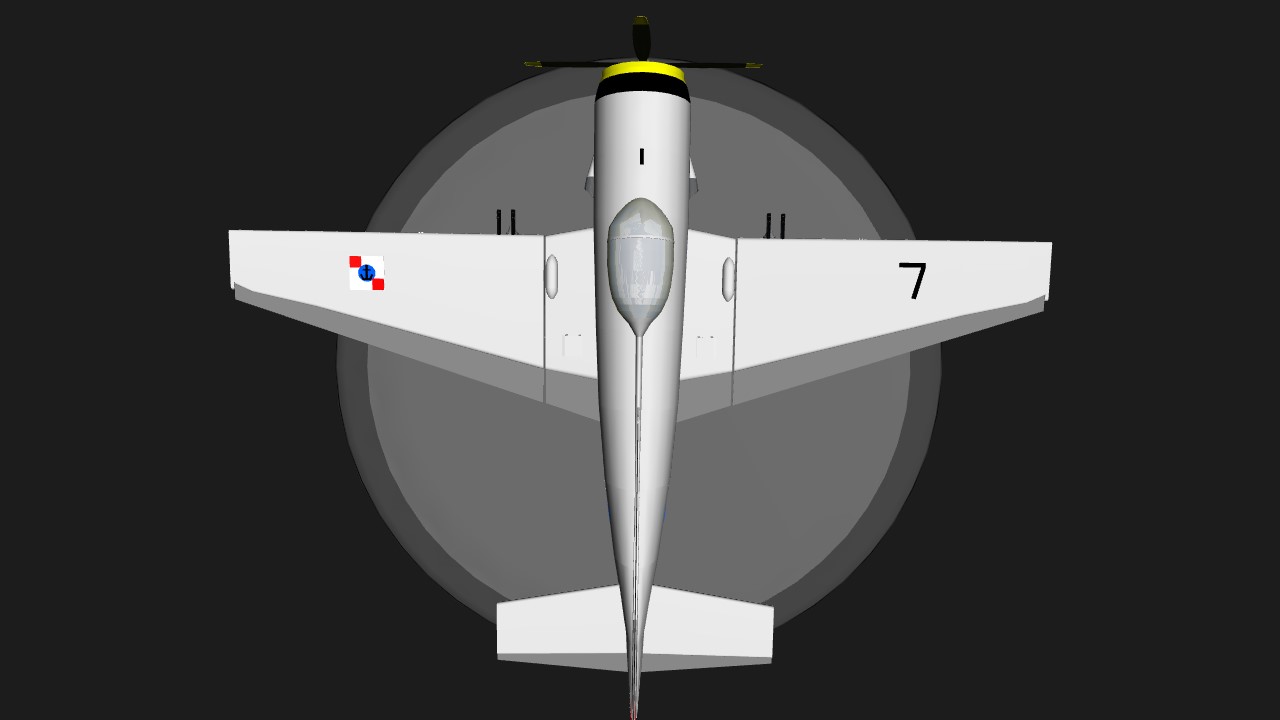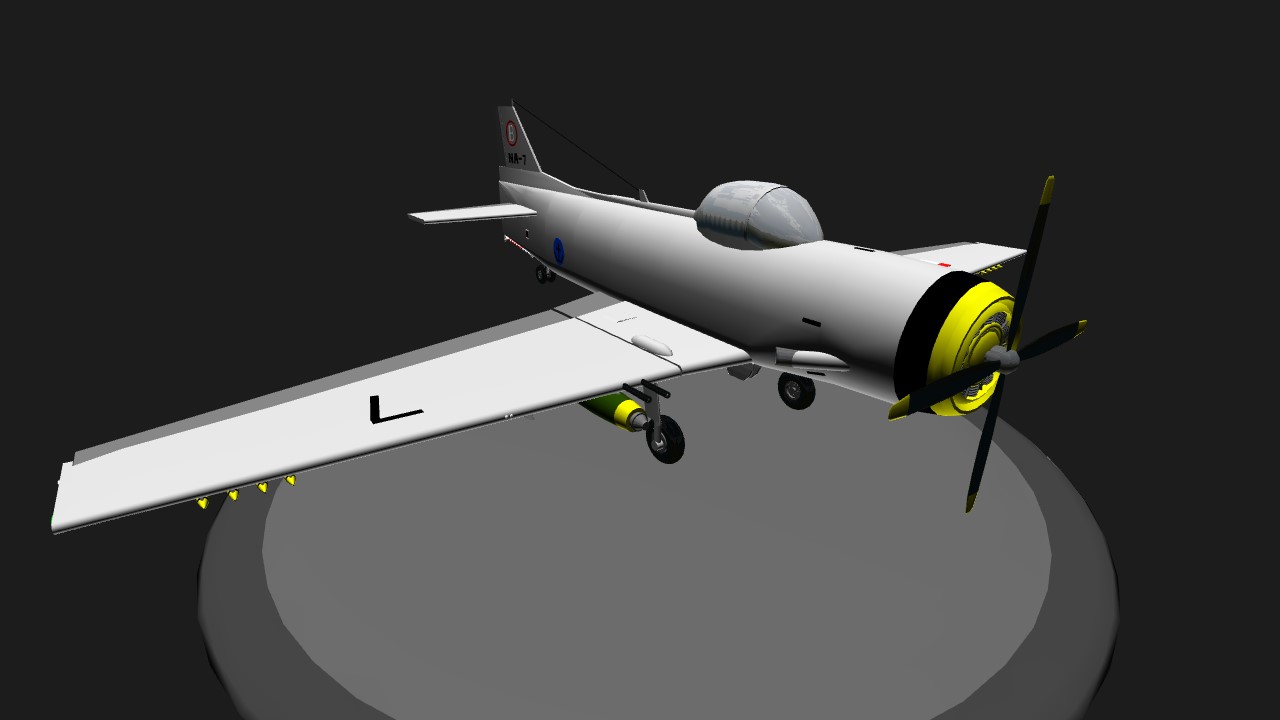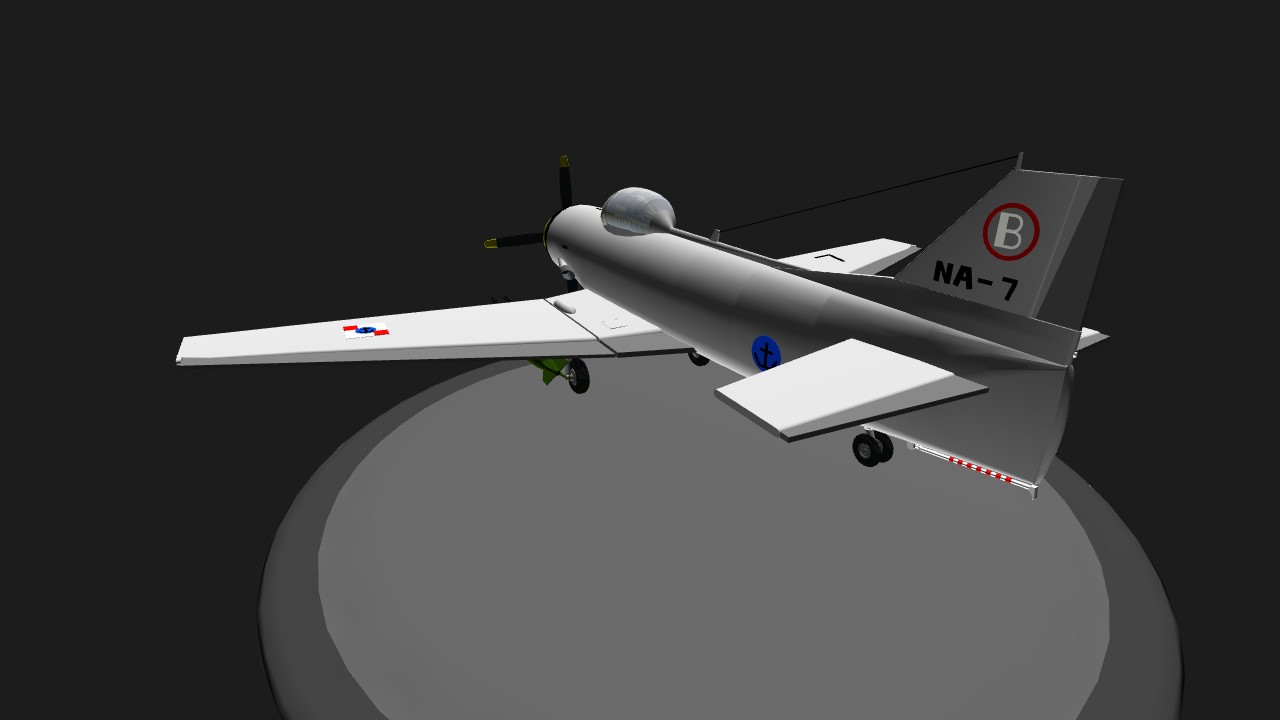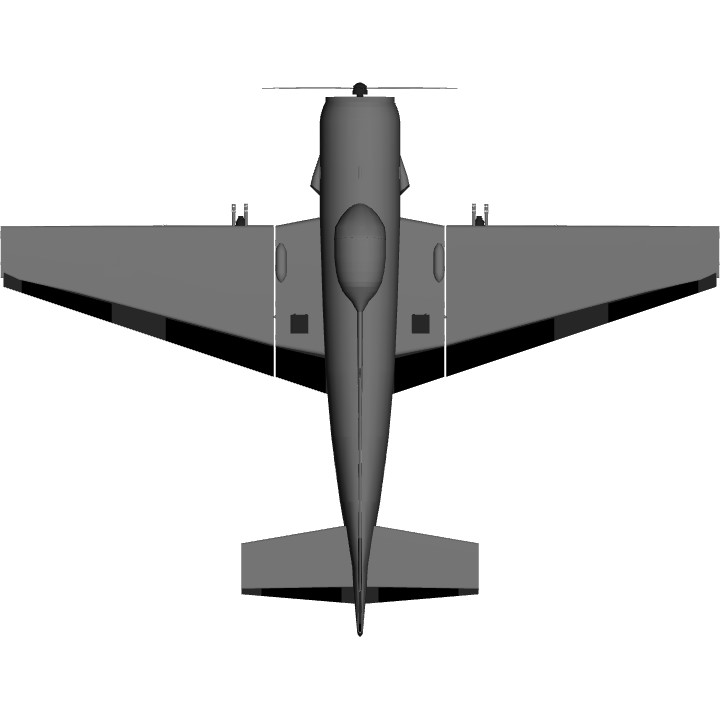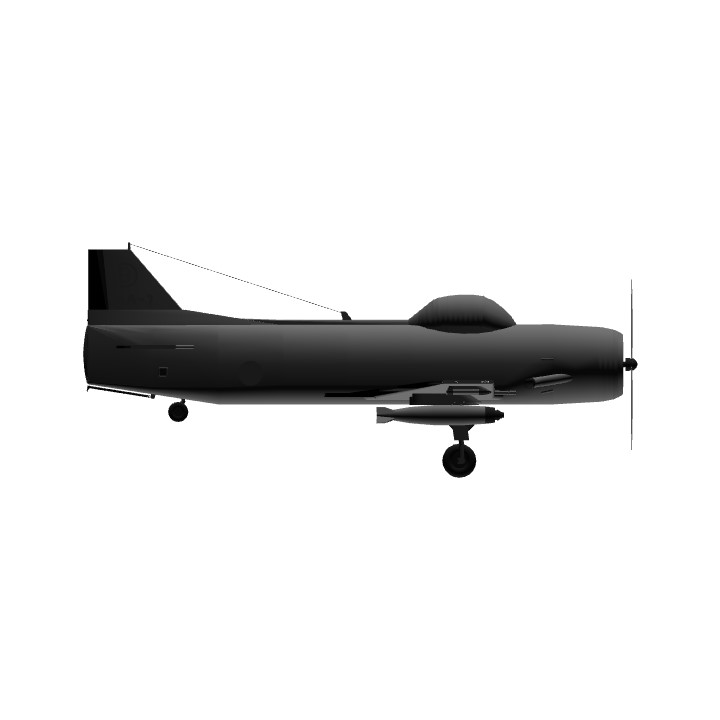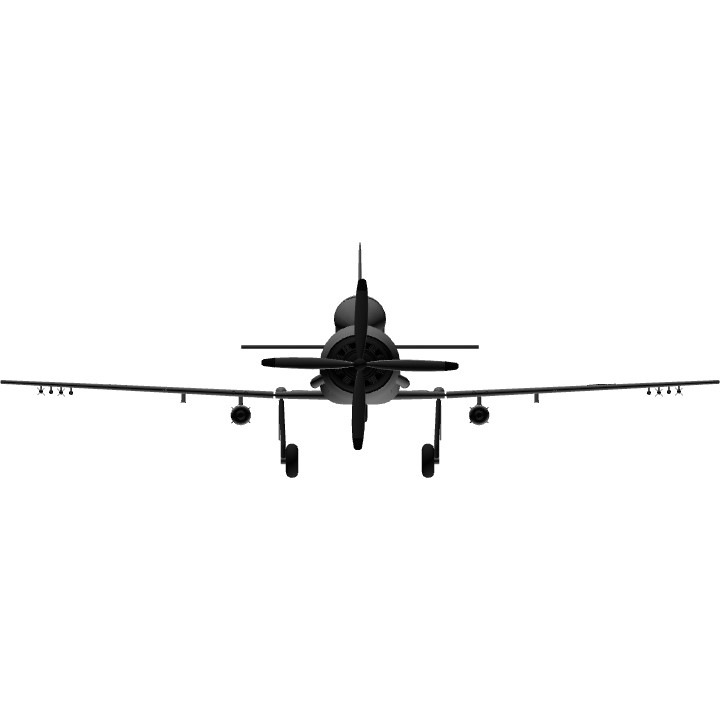AN-1A <Searaider>
Role: Attacker
Service: 1948-1964 (UNT service)
1952-1975 (other nations)
PERFORMANCE:
Max. speed: 290 mph. (Low Level)
332 mph. (10,000 ft)
Never-exceed speed: 380 mph.
Landing speed: 90 mph.
Stall speed: 80 mph.
Service ceiling: 15,000 ft.
ARMAMENT:
4x Colt Mk.16 autocannon (300rds. each)
8x Mk.1 HEART(Hi-Explosive Attack RockeT)
2x Mk.50 500lb. bombs OR
2000 lbs. of ordnance
An ugly, slow relic of the piston age, the AN-1A <Raider> was heavy and hard to fly. It was also the most feared attackers of its day.
As piston-engined planes were being taken out of service as fighters, their slow-speed handling made them excellent for low and slow attack runs. However, most countries did away with attackers, using fighters with bombing capability instead.
But fighters aren't designed for attacking, and their high speed makes them ineffective at low level attack runs. The UNT Navy desired a true attack plane to arm the new carriers with ground attack capability. The answer was a prop-driven plane already in service with the Air Force known as the
A-1 <Raider>.
With a heavy armament, long range and surprising agility for its size and weight, it made for an excellent attacker. An interesting aspect of its design is the large fuselage, built as to carry downed pilots during rescue missions.
The navalized version was created by adding folding wings and a tailhook, and it was named AN-1A <Searaider>.
It was named the "Warthog" by its crews. Heavy, large and loud, nothing was subtle about it. Much like a warthog, it had tusks.
Eight Mk.1 rockets, four autocannon and up to 2000lbs. of ordnance could rip through enemy ground forces with ease.
It had tame slow speed handling, allowing for a rocket barrage with a strafing run to follow.
It was hard to land, however. Most aircraft lost were destroyed in crashes on landing.
1,050 were produced, with 121 lost.
This specific AN-1A of the USS Beast served from 1951-1960 in CAG-25*.
-FLIGHT MANUAL-
VTOL - Flaps (ONLY USE THE FIRST NOTCH DOWN FOR TAKE OFF!
AG-1 + VTOL - Fold wings
AG-2 - Tailhook
AG-3 - Jettison ordnance
AG-8 - Lights
NOTE: When landing on a carrier, allow your landing gear to touch down before you catch the arresting wire. If you catch the wire while in the air, you will crash.
Enjoy!
CAG-25 = Carrier Attack Group 25
Specifications
General Characteristics
- Created On Windows
- Wingspan 59.1ft (18.0m)
- Length 45.4ft (13.8m)
- Height 19.3ft (5.9m)
- Empty Weight 10,469lbs (4,748kg)
- Loaded Weight 13,731lbs (6,228kg)
Performance
- Horse Power/Weight Ratio 0.218
- Wing Loading 20.5lbs/ft2 (99.9kg/m2)
- Wing Area 671.1ft2 (62.3m2)
- Drag Points 6970
Parts
- Number of Parts 238
- Control Surfaces 9
- Performance Cost 974

